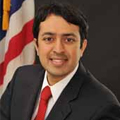Valentine’s Day is a time of flowers, chocolate hearts, and celebrations of love and life. For thousands of years, the heart has symbolized love and passion and has inspired great poetry, literature, art, and music. But maybe this year we should start a new tradition on Valentine’s Day: To check in with ourselves and those around us to look for signs of heart disease.
There are several types of heart disease, with coronary artery disease being the most common. It is estimated that more than 80 million Americans have at least one major risk factor for heart disease and stroke, such as high blood pressure, obesity, diabetes, and high cholesterol levels.
All told, some one million people a year will die of heart disease. Though one of the risk factors is advancing age, more than 150,000 heart disease and stroke deaths every year are among people younger than 65. With the rise in obesity and type 2 diabetes rates in children, we will likely see increased rates of heart disease and stroke occurring at earlier ages. Continue reading

